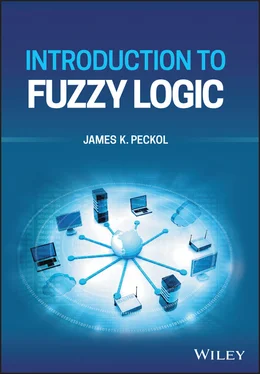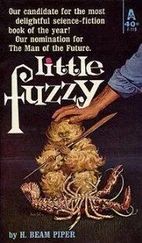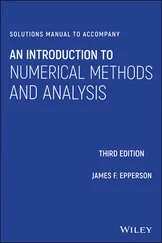James K. Peckol - Introduction to Fuzzy Logic
Здесь есть возможность читать онлайн «James K. Peckol - Introduction to Fuzzy Logic» — ознакомительный отрывок электронной книги совершенно бесплатно, а после прочтения отрывка купить полную версию. В некоторых случаях можно слушать аудио, скачать через торрент в формате fb2 и присутствует краткое содержание. Жанр: unrecognised, на английском языке. Описание произведения, (предисловие) а так же отзывы посетителей доступны на портале библиотеки ЛибКат.
- Название:Introduction to Fuzzy Logic
- Автор:
- Жанр:
- Год:неизвестен
- ISBN:нет данных
- Рейтинг книги:4 / 5. Голосов: 1
-
Избранное:Добавить в избранное
- Отзывы:
-
Ваша оценка:
- 80
- 1
- 2
- 3
- 4
- 5
Introduction to Fuzzy Logic: краткое содержание, описание и аннотация
Предлагаем к чтению аннотацию, описание, краткое содержание или предисловие (зависит от того, что написал сам автор книги «Introduction to Fuzzy Logic»). Если вы не нашли необходимую информацию о книге — напишите в комментариях, мы постараемся отыскать её.
Learn more about the history, foundations, and applications of fuzzy logic in this comprehensive resource by an academic leader Introduction to Fuzzy Logic
Introduction to Fuzzy Logic
Introduction to Fuzzy Logic
Introduction to Fuzzy Logic — читать онлайн ознакомительный отрывок
Ниже представлен текст книги, разбитый по страницам. Система сохранения места последней прочитанной страницы, позволяет с удобством читать онлайн бесплатно книгу «Introduction to Fuzzy Logic», без необходимости каждый раз заново искать на чём Вы остановились. Поставьте закладку, и сможете в любой момент перейти на страницу, на которой закончили чтение.
Интервал:
Закладка:
With the fundamentals of sets and set membership established, we study the basic theory of classic or crisp logic. We then move to the details of the properties and logical operations of using crisp sets and of developing crisp membership applications. Crisp sets and crisp membership applications are a prelude to the introduction of fuzzy logic , fuzzy sets , fuzzy set membership, and threshold logic.
Chapter 4moves to the fuzzy world introducing and focusing on what are termed fuzzy sets. The chapter reviews some of the principle definitions and concepts of the theory of ordinary or classical sets and illustrates how these are identical to fuzzy subsets when the degree of membership in the subset is expanded to include all real numbers in the interval [0.0, 1.0]. We learned that vagueness and imprecision are common in everyday life. Very often, the kind of information we encounter may be placed into two major categories: statistical and nonstatistical.
The fundamental fuzzy terminology is presented and followed by the introduction of the basic fuzzy set properties and applications. With properties and applications understood, the focus shifts to membership functions and the grade of membership. Up to this point, data has been expressed in numerical form. Often a graphical presentation is a more effective and convenient tool. Such graphs can be expressed in both linear and curved graphical format.
Linguistic Variables and Hedges
Chapter 5, we begin this chapter with a look at early symbols and sounds and their evolution to language and knowledge. Building on such origins, we introduce the concept of sets and move into the worlds of formal s et theory , Boolean algebra and introduce crisp variables .
From the crisp world, we migrate into the fuzzy world and introduce the concept and term linguistic variable as a variable whose values are words or phrases in a natural (or synthetic) language rather than real numbers. Such words are interpreted as representing labels on fuzzy subsets within a universe of discourse, which refers to a collection of entities that are currently being discussed, analyzed, or examined.
We learn that the values for a linguistic variable are generated from a set of primary terms, a collection of modifiers called hedges , and a collection of connectives . Hedges affect the value of a linguistic variable by either concentrating or diluting the membership distribution of the primary terms. We learn that concentrating or diluting a membership distribution can be very clearly represented graphically as discussed in Chapter 4.
We conclude with a discussion of the purpose, creation and use, and manipulation of hedges.
Fuzzy Inference and Approximate Reasoning
Chapter 6introduces the concepts of fuzzy inference and approximate reasoning. As part of developing an effective reasoning methodology, we introduce and demonstrate the fundamental concepts and various relationships of equality, containment and entailment, conjunction and disjunction, and union and intersection among sets and subsets.
We stress that for engineers, reasoning is an essential and significant element of effective design and the successful solution to problems. We also introduce and demonstrate a variety of relationships between and among fuzzy sets and subsets as an important part of that whole process.
We conclude with the inference rules, modus ponens and modus tollens, which govern deduction and abduction, the forward and backward reasoning processes.
Chapter 7introduces and extends the crisp world development process into the fuzzy world. The first step effectively applies the fuzzification process to extend crisp world data and basic knowledge of fuzzy world fundamentals into the domain of fuzzy system design and development. The fuzzy design process is then illustrated through its application in the design and development of several basic systems. The closing step, called defuzzification, is then applied to return crisp data to the real world.
Doing the Work
Chapter 8, we open the chapter with a summary of the growing strengths and major attractions of fuzzy logic. We identify two of the major attractions. The first attraction is fuzzy logic's ability to facilitate expressing problems in linguistic terms. The second is its ability to support applications in the areas where a designer can encounter vagueness and where the numerical mathematical model of a system may be too complex or impossible to build using conventional techniques.
We then introduce and present a formal approach to fuzzy logic design. We point out that a fundamental and essential key to any successful design process is that knowing and understanding the problem and recognizing potential hazards that might occur during the design process. We stress that without such knowledge, one cannot and should not proceed with a design until such issues are rectified. In addition, we recommend periodic design reviews throughout the design process and stress the performance of failure modes , effects , and criticality analysis (FMECA) testing.
We then introduce and walk through the execution of the major steps in a formal design methodology. In particular, we refer to the requirements and design documentation in Appendix A and the Unified Modeling Language tools and touch on text in Appendix B.
Introducing Threshold Logic
Chapter 9, as we now move forward, we introduce and explore two tools that build on and extend the knowledge gained from crisp and fuzzy logic: threshold logic and perceptrons. The incorporated features ultimately make important contributions to the foundation of advanced tools called neural networks, machine learning, and artificial intelligence.
Threshold logic brings into the world of digital logic design the ability to alter the value of input signals using what are designated as weights. The logic also introduces the capability to set a threshold that the summed weighted inputs need to exceed to assert a true output. Although effective with most logical operations, the threshold devices fail at the implementation of the exclusive OR.
Moving to Perceptron Logic
Chapter 10, we open the chapter with an introduction to the architecture of the threshold logic device, which is a basic building block at the heart of what is called a perceptron . The perceptron is also known as an artificial neuron . Starting with a high‐level model of the basic biological neuron, we introduce the vocabulary describing the elementary components of the device.
From there, we move to the McCulloch–Pitts (MCP) artificial neuron and illustrate possibilities of implementing the fundamental logic devices using the MCP model. We then bring in the concept of weights from threshold logic and discuss, develop, and implement an MCP neuron network. The next step is to introduce and present the basic perceptron. We walk through each of the major functional blocks from inputs to output in the basic perceptron and also point out potential implementation and operational concerns and possible solutions of which to be aware.
We then present and describe perceptron learning and develop the learning rule. The chapter concludes with a presentation of the essential steps for testing the perceptron.
The Appendices
Two supporting appendices are included. The first provides an introduction to the preparation of formal Requirements Specifications and Design Specifications. The second provides a tutorial of the Unified Modeling Language (UML) and associated tools and some important issues to consider in the testing process.
Читать дальшеИнтервал:
Закладка:
Похожие книги на «Introduction to Fuzzy Logic»
Представляем Вашему вниманию похожие книги на «Introduction to Fuzzy Logic» списком для выбора. Мы отобрали схожую по названию и смыслу литературу в надежде предоставить читателям больше вариантов отыскать новые, интересные, ещё непрочитанные произведения.
Обсуждение, отзывы о книге «Introduction to Fuzzy Logic» и просто собственные мнения читателей. Оставьте ваши комментарии, напишите, что Вы думаете о произведении, его смысле или главных героях. Укажите что конкретно понравилось, а что нет, и почему Вы так считаете.












